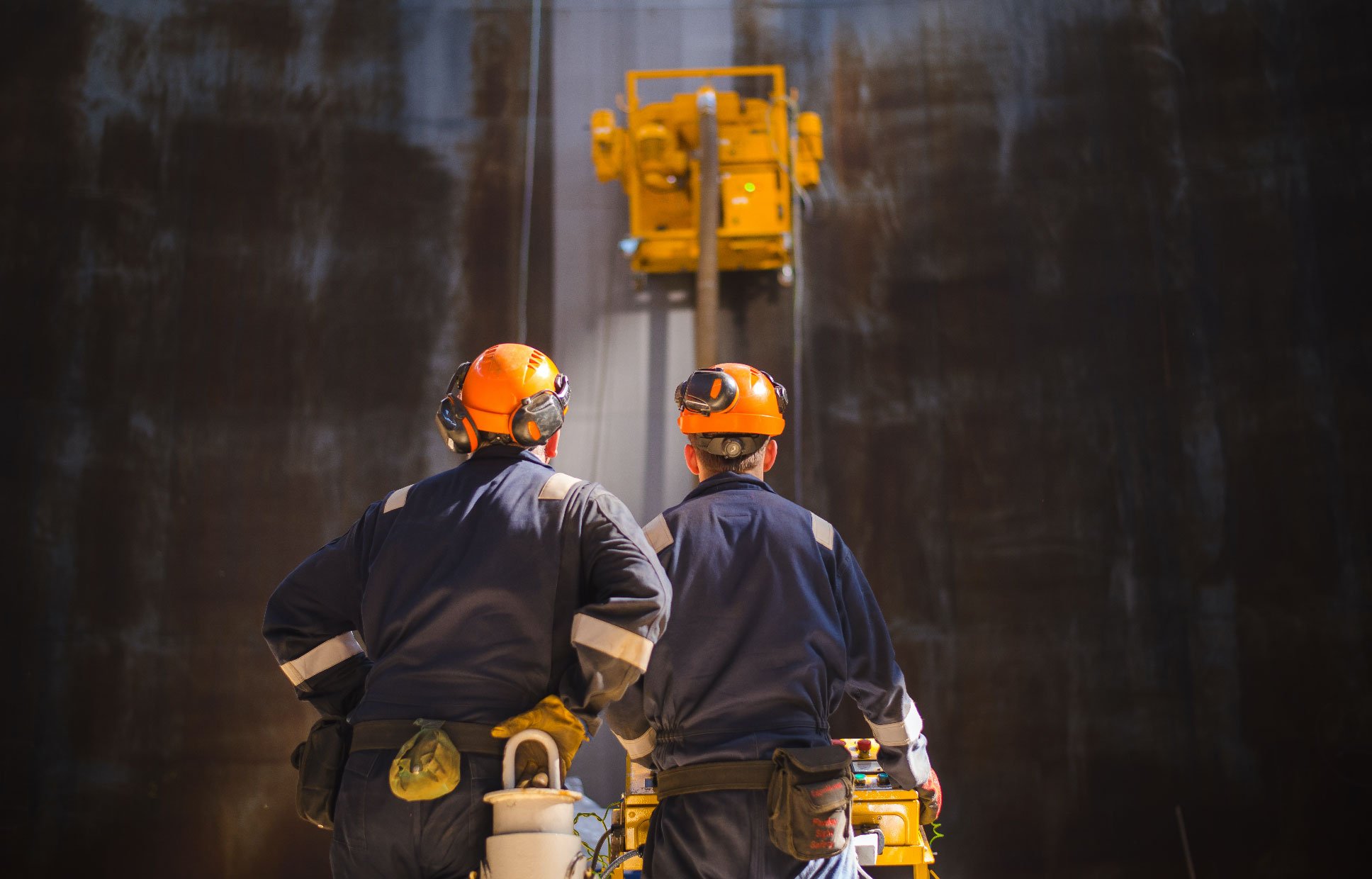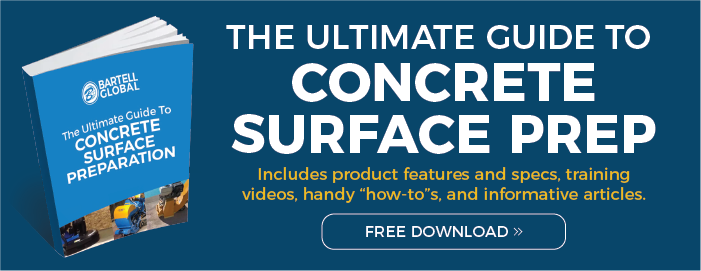 Using a concrete grinder is something that I always wanted to do when I started working at Bartell Global. A friend of mine needed a hand removing some glue off of a floor and I thought, hey this can’t be so hard, let’s give it a go! I knew the theory of concrete grinding pretty well, so I thought I was pretty prepared after talking to some of our grinding experts. The short version of this story is that I actually was pretty prepared.
Using a concrete grinder is something that I always wanted to do when I started working at Bartell Global. A friend of mine needed a hand removing some glue off of a floor and I thought, hey this can’t be so hard, let’s give it a go! I knew the theory of concrete grinding pretty well, so I thought I was pretty prepared after talking to some of our grinding experts. The short version of this story is that I actually was pretty prepared.
Concrete grinding is actually a lot easier than I thought it was going to be. Obviously, this depends so much on what you are trying to do and the circumstances, but the basic operation of the machines was easier than expected. I definitely had some issues that if avoided, would have help the job go faster and the results would have been better. In this blog, I am going to share a few of the things I learned during this process to help you avoid some of the mistakes that I made.
PICK THE RIGHT DIAMONDS
I have a pretty good understanding about diamond bonds and grits, but have never had to put that knowledge to the test. I had to experiment with a few different types before I found one that worked well and achieved the result I wanted. If I would have used the wrong diamonds, I can only image the mess I would have made.
My recommendation when starting your first few grinding jobs is to take diamond selection very seriously. This means properly understanding bonds and segment styles, as well as testing the concrete hardness if you have the ability to. Also take into account if you are removing something on top of the concrete and what you plan to do with it after. If you are going to be polishing the floor after you remove glue for example, you have to make sure you use diamonds that don’t scratch the floor beyond repair.
Speak with the diamond supplier in depth about the conditions of the job so that they can give you a good recommendation.
DON’T RUSH THINGS
By nature, I can be a bit impatient. This is not a helpful trait to have when grinding concrete, especially when you are removing glue that is tough to get off the floor. At the beginning of the job, I was taking my time and getting all the glue off in one pass. As the night went on, I wanted to finish up and began to go a bit faster than I probably should have. This resulted in having to go back over some areas multiple times to get the glue off fully.
This is a huge time waster. To have to go back and do multiple passes when it is not necessary just kills the production that you are able to achieve if you are just patient.
MAKE SURE YOU HAVE PROPER POWER
Because pretty much all these larger grinders need more than household power. Depending on where you are in the world, the power needed will change. You will either need a proper generator or an electrician to come and pull the right power.
This is not a last-minute thing to take care of. I found out 2 days before the job started that I would be grinding and that was cutting it close. Communicate with the supplier on what the electrical requirements are if you don’t know and also make sure that you know which type of plug is on the grinder. Someone could come and hook the power up properly, but if they don’t put the right plug on, you will be in the same situation.
PLAN OUT THE POSITION OF YOUR VACUUM AND CORDS
Before you start grinding make sure that you think about the pattern you are going to do and how the vacuum hoses and power cords will affect your path. I didn’t really think too much about where I had the vac in the room until later on and it wastes a bunch of time having to stop grinding and move the vacuum back and forth. The Ermator vacuum I was using was able to be pulled by the hose from a distance, but will all the cords on the ground, I would easily get tangled and have to go do it manually.
The area that you should have your vacuum and cords will differ depending on the size and shape of the room that you are grinding. Make sure you take some time to think about how the pattern you will be grinding in will be affected by the cords and vacuum.
EDGING SUCKS
Plain and simple. Grinding right up the wall or posts is probably the worst part about the grinding process in my opinion. You basically have 2 options. You can use a hand grinder and be on your hands and knees for hours or use a smaller walk behind grinder that has edging capabilities. We were using the DFG 280 to edge which worked pretty well, but it is tedious work.
Because you are using a smaller grinder that doesn’t have as much weight on the diamonds, it took us longer to remove the glue from this area. You also have to be careful about how you blend to the two grinding paths together so that you avoid a different look when applying a finish.
In the end, we got it done, but I expected the edges to go quickly and they did not. Account for this in your time estimate.
All in all, grinding that floor gave me a new perspective on what a lot of you go through every day and I have a lot more respect for all you concrete grinders out there. If you’re a pro, I am sure you learned these lessons just as I did, but if you're just getting into the game, hopefully thinking about these things before you start will help to avoid some wasted time and money on your first few jobs.


 By
By 